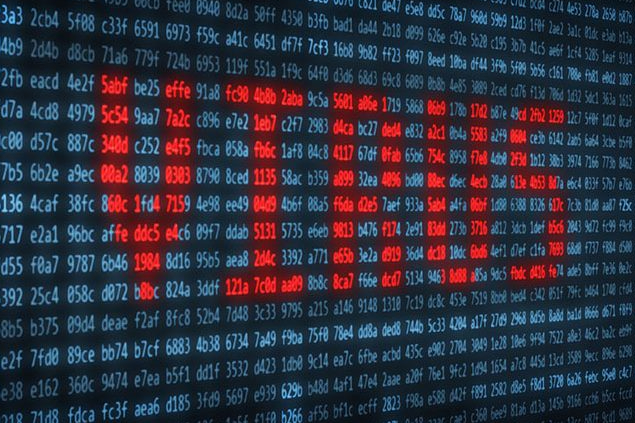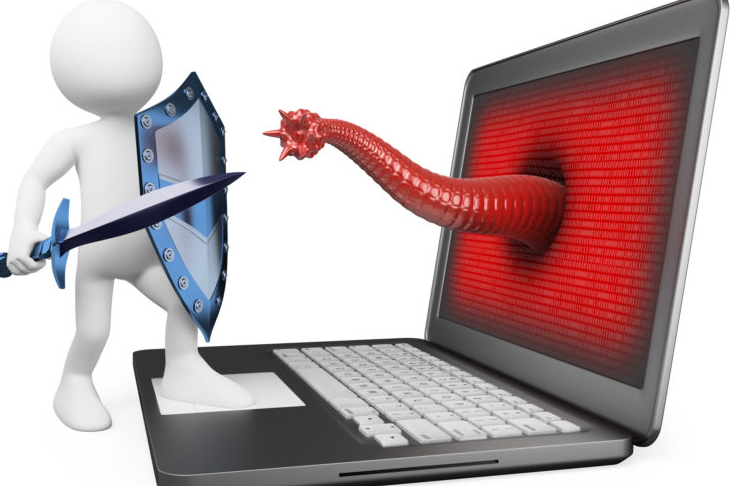In today’s digital age, understanding the various threats to your computer’s security is more important than ever. Computer Virus delves into the world of malicious software, providing you with essential knowledge to protect your system. From well-known viruses that have caused global havoc to lesser-known threats that quietly infiltrate networks, this article explores the different types of computer viruses and the methods they use to spread.
Computer viruses are a pervasive threat in the digital landscape, capable of wreaking havoc on personal and professional devices alike. In this comprehensive guide, Computer Virus, we will explore the most prevalent types of computer viruses and the various ways they can infiltrate your system. By understanding these threats, you can take proactive steps to safeguard your data and maintain your computer’s integrity.
As technology advances, so do the methods employed by cybercriminals to spread computer viruses. This article, Computer Virus, aims to equip you with the knowledge needed to recognize and combat these digital threats. We will examine the different types of computer viruses that are commonly encountered and shed light on the mechanisms they use to propagate, ensuring you stay one step ahead in protecting your valuable information.
In a world where computers play an integral role in our daily lives, the threat of viruses is ever-present. Computer Virus offers an in-depth look at the various forms of malicious software that can infect your system. By understanding the common types of computer viruses and their modes of transmission, you can better defend your devices against these insidious attacks and keep your digital environment secure.
Table of Contents
Introduction
Importance of Understanding Computer Viruses
Understanding computer viruses is crucial in today’s digitally connected world. A computer virus can cause significant damage to both personal and professional devices, leading to data loss, compromised security, and financial loss. By comprehending the nature of computer viruses, users can take proactive measures to protect their systems and sensitive information from these malicious threats.
Knowledge of computer viruses also helps in recognizing the signs of an infection early on. Many computer viruses operate silently, spreading across networks and devices without immediate noticeable effects. By understanding how a computer virus behaves and spreads, users can identify suspicious activity more quickly and take appropriate actions to mitigate the risk, preventing extensive damage.
Moreover, being informed about computer viruses enables individuals and organizations to implement effective cybersecurity strategies. This includes regular updates to antivirus software, safe browsing practices, and employee training on recognizing potential threats. Awareness and education are key to maintaining robust defenses against the ever-evolving landscape of computer viruses, ensuring long-term digital safety.
Overview of the Article
This article provides an in-depth exploration of computer viruses, aiming to equip readers with the knowledge needed to protect their digital environments. By understanding the various types of computer viruses and how they spread, users can take proactive steps to safeguard their systems. This comprehensive guide covers everything from the basic definition of a computer virus to practical prevention tips.
The article begins by defining what a computer virus is and tracing its historical background. It then delves into the common types of computer viruses, such as boot sector viruses, file infector viruses, macro viruses, polymorphic viruses, resident viruses, and direct action viruses. Each type is explained in detail, highlighting how they operate and the potential impact on infected systems. This section provides readers with a clear understanding of the diverse nature of computer viruses.
Finally, the article addresses the methods by which computer viruses spread, including email attachments, malicious downloads, infected removable media, network connections, and social engineering tactics. It also offers practical advice on protecting your computer from viruses and steps to take if your system becomes infected. By following the guidance provided, readers can enhance their cybersecurity and reduce the risk of falling victim to a computer virus.
What is a Computer Virus?
A computer virus is a type of malicious software designed to replicate itself and spread from one computer to another. Unlike other forms of malware, a computer virus requires a host program or file to activate its code. Once activated, it can cause a range of harmful effects, from corrupting data and stealing information to crashing entire systems. Understanding the basic nature of a computer virus is essential for protecting your devices from these malicious threats.
Computer viruses can infiltrate systems through various means, including email attachments, downloaded files, and infected software. Once a computer virus gains access to a system, it can spread rapidly, embedding itself in other programs and files. This capability to multiply and propagate makes a computer virus particularly dangerous, as it can compromise multiple devices connected to the same network, leading to widespread damage.
Recognizing the signs of a computer virus is crucial for early detection and removal. Symptoms may include slow system performance, unexpected pop-ups, frequent crashes, and unauthorized changes to files. By being aware of these indicators and maintaining updated antivirus software, users can effectively combat the threat of a computer virus, ensuring their systems remain secure and functional.
Definition and Basic Concepts
A computer virus is a type of malicious software designed to replicate itself and spread from one device to another. Unlike other forms of malware, a computer virus needs a host program to attach to and execute its code. Once a computer virus infects a host, it can perform a variety of harmful actions, such as corrupting files, stealing personal information, or causing system failures. Understanding what a computer virus is helps in recognizing and combating these digital threats.
The basic concept behind a computer virus involves three key components: infection, replication, and activation. Infection occurs when the virus attaches itself to a host file or program. Replication is the process by which the virus copies itself to other programs or files on the system. Activation happens when the virus executes its malicious code, which can range from displaying annoying messages to deleting critical data. Knowing these components allows users to identify the potential presence of a computer virus and take preventive measures.
Computer viruses can spread through various vectors, including email attachments, software downloads, and removable media like USB drives. They often exploit security vulnerabilities in software or trick users into executing the infected file. Being aware of these spreading mechanisms is essential for preventing a computer virus from infecting your system. Regularly updating your antivirus software and practicing safe browsing habits are effective ways to protect against computer viruses and maintain a secure digital environment.

Historical Background
The concept of a computer virus dates back to the early 1970s, with the creation of the first known computer virus, “Creeper.” Developed as an experimental self-replicating program, Creeper demonstrated the potential for software to spread across computer networks. This early computer virus was relatively harmless, displaying a simple message, but it laid the groundwork for more sophisticated and malicious viruses that would emerge in the following decades.
In the 1980s, computer viruses became more prevalent with the rise of personal computers and the widespread use of floppy disks for data transfer. The infamous “Brain” virus, created in 1986, was the first virus to target IBM PC systems. Brain was a boot sector virus, infecting the master boot record of floppy disks, which allowed it to spread rapidly among users. This era marked the beginning of widespread awareness and concern about computer viruses, leading to the development of early antivirus software.
The 1990s and 2000s saw the proliferation of more complex and destructive computer viruses, such as “ILOVEYOU” and “Melissa,” which caused significant damage worldwide. These viruses exploited email as a primary vector for spreading, highlighting the need for improved cybersecurity measures. Today, the historical evolution of the computer virus continues to shape the development of advanced security solutions, as cybercriminals constantly devise new ways to exploit vulnerabilities in digital systems. Understanding this historical background underscores the importance of ongoing vigilance and innovation in combating computer viruses.
Common Types of Computer Viruses

Boot Sector Viruses
A boot sector virus is a type of computer virus that infects the master boot record (MBR) or the boot sector of a storage device, such as a hard drive or USB stick. This type of computer virus is particularly dangerous because it activates when the system starts up, often before most antivirus software can detect it. Once active, a boot sector virus can interfere with the boot process, potentially rendering the computer inoperable.
Description and Examples
One of the most infamous examples of a boot sector virus is the “Brain” virus, which emerged in 1986. It infected the boot sector of floppy disks, spreading from one computer to another when the disks were shared. Another well-known boot sector virus is “Stoned,” which appeared in the late 1980s and displayed a message saying “Your PC is now stoned” when it infected a computer. These early boot sector viruses highlighted the need for robust antivirus measures to protect against such threats.
Modern boot sector viruses continue to evolve, employing sophisticated techniques to evade detection. For example, the “Petya” virus, which emerged in 2016, not only infected the master boot record but also encrypted the file system, demanding a ransom to restore access. Understanding these examples of boot sector computer viruses underscores the importance of maintaining updated antivirus software and being cautious with removable media to protect your system from these persistent threats.
Impact on Systems
A boot sector virus is a type of computer virus that infects the master boot record (MBR) or the boot sector of a storage device, such as a hard drive or USB stick. This type of computer virus is particularly dangerous because it activates when the system starts up, often before most antivirus software can detect it. Once active, a boot sector virus can interfere with the boot process, potentially rendering the computer inoperable.
One of the most infamous examples of a boot sector virus is the “Brain” virus, which emerged in 1986. It infected the boot sector of floppy disks, spreading from one computer to another when the disks were shared. Another well-known boot sector virus is “Stoned,” which appeared in the late 1980s and displayed a message saying “Your PC is now stoned” when it infected a computer. These early boot sector viruses highlighted the need for robust antivirus measures to protect against such threats.
Modern boot sector viruses continue to evolve, employing sophisticated techniques to evade detection. For example, the “Petya” virus, which emerged in 2016, not only infected the master boot record but also encrypted the file system, demanding a ransom to restore access. Understanding these examples of boot sector computer viruses underscores the importance of maintaining updated antivirus software and being cautious with removable media to protect your system from these persistent threats.
File Infector Viruses

File infector viruses are a type of computer virus that attach themselves to executable files, such as .exe or .com files, spreading rapidly when these files are opened. These viruses can corrupt or delete critical files, leading to significant data loss and system instability. By understanding how file infector computer viruses operate and maintaining updated antivirus software, users can protect their systems from these damaging threats.
How They Operate
File infector viruses are a type of computer virus that attaches themselves to executable files, such as .exe or .com files. When an infected file is opened, the virus is activated and can spread to other executable files on the system. This type of computer virus can be particularly destructive, as it can corrupt or delete files, leading to significant data loss and system instability.
Once a file infector virus has infected an executable file, it can modify the file’s code to include the virus’s own malicious code. This allows the virus to execute its payload each time the infected file is run. The payload of a file infector virus can vary, ranging from displaying annoying messages to more severe actions like data corruption or theft. The ability to attach to and spread through executable files makes this type of computer virus highly contagious and dangerous.
File infector viruses can spread through various means, including email attachments, downloads from untrusted websites, and shared network drives. To protect against these viruses, it is essential to avoid opening suspicious files, use reliable antivirus software, and keep your system and software up to date. By understanding how file infector computer viruses operate, users can take proactive steps to safeguard their systems and minimize the risk of infection.
Common File Infector Viruses
Common file infector viruses have caused significant damage and disruption over the years, making them a critical concern in cybersecurity. One notorious example is the “CIH” virus, also known as “Chernobyl.” This computer virus, discovered in 1998, infected executable files on Windows 95, 98, and ME systems. On specific dates, it would overwrite critical system information, rendering computers unusable and causing extensive data loss.
Another well-known file infector virus is “Sality.” First identified in 2003, this computer virus infects executable files and disables security software, making it difficult to detect and remove. Sality spreads through network drives, USB drives, and peer-to-peer file-sharing networks. Once infected, a computer can become part of a botnet, allowing attackers to control it remotely and use it for malicious activities such as sending spam or launching attacks on other systems.
The “Virut” virus is another prevalent file infector that targets Windows systems. Discovered in the early 2000s, this computer virus infects .exe and .scr files, spreading rapidly across networks. Virut is known for its polymorphic nature, meaning it can change its code to evade detection by antivirus software. Infected systems often experience frequent crashes, slow performance, and unauthorized access to sensitive information. Awareness of these common file infector computer viruses highlights the importance of robust cybersecurity practices to protect against these persistent threats.
Macro Viruses
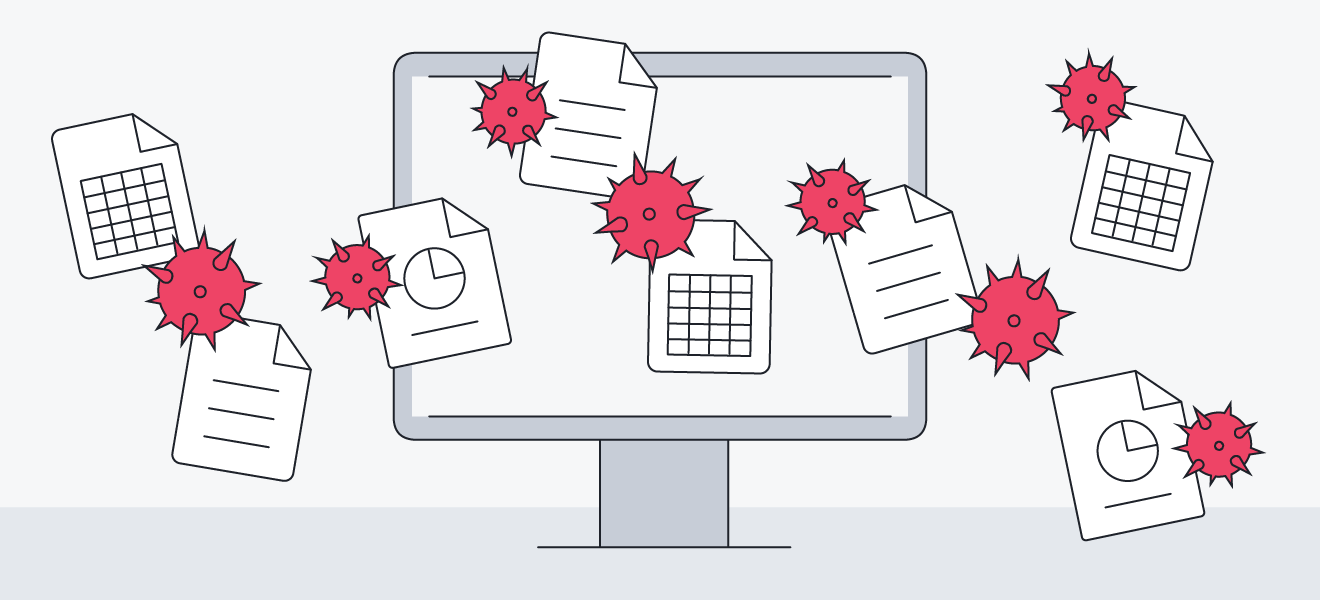
Macro viruses are a type of computer virus that targets applications like Microsoft Word and Excel, spreading through infected documents and templates. These viruses execute malicious macro scripts when the document is opened, leading to data corruption, unauthorized access, and widespread infection. To protect against macro computer viruses, it is essential to use updated antivirus software and be cautious when handling email attachments and downloaded files.
Spread and Impact
Macro viruses are a type of computer virus that targets applications like Microsoft Word and Excel by exploiting their macro programming capabilities. These viruses spread primarily through infected documents and templates. When an unsuspecting user opens an infected file, the macro virus is activated, embedding itself into the application and potentially spreading to other documents. This type of computer virus can quickly propagate through shared files and email attachments, making it a widespread threat in both personal and professional environments.
The impact of macro viruses can be significant, affecting both individual users and organizations. Once a macro virus infects a system, it can cause various malicious activities, such as corrupting data, altering documents, and stealing sensitive information. For businesses, the consequences can be severe, leading to data breaches, loss of productivity, and compromised confidential information. The ability of a macro virus to execute harmful actions without the user’s immediate awareness makes it particularly dangerous.
Preventing the spread of macro viruses involves several key practices. Users should be cautious when opening email attachments or downloading files from untrusted sources. Implementing robust antivirus software that includes macro virus detection is essential. Additionally, disabling macros by default and only enabling them for trusted documents can significantly reduce the risk of infection. Understanding the spread and impact of macro computer viruses is crucial for maintaining a secure digital environment.
Notable Macro Virus Incidents Impact
Notable macro virus incidents have demonstrated the destructive potential of this type of computer virus. One of the most infamous examples is the “Melissa” virus, which emerged in 1999. Melissa spread rapidly by infecting Microsoft Word documents and sending itself to the first 50 contacts in the user’s email address book. This widespread dissemination caused significant disruptions, forcing companies and government agencies to shut down their email systems to prevent further spread.
Another significant macro virus incident involved the “Concept” virus, discovered in 1995. Concept was one of the first widely recognized macro viruses and exploited the macro functionality in Microsoft Word. It spread through infected Word documents and, although relatively harmless in its payload, highlighted the vulnerability of widely used software to macro viruses. Concept’s rapid spread underscored the need for enhanced security measures in document handling and antivirus protection.
The “I LOVE YOU” virus, which appeared in 2000, is another notable macro virus incident. This computer virus spread via email with the subject line “I LOVE YOU” and an attached text file that, when opened, executed a macro script. The virus infected millions of computers worldwide, causing an estimated $10 billion in damages. The I LOVE YOU virus deleted critical files and harvested sensitive information, demonstrating the severe impact a macro virus can have on both individuals and organizations. Understanding these notable macro virus incidents underscores the importance of vigilance and robust cybersecurity practices to protect against such threats.
Polymorphic Viruses

Polymorphic viruses are a sophisticated type of computer virus that constantly change their code to evade detection. By mutating each time they infect a new system, these viruses can bypass traditional signature-based antivirus programs, making them difficult to detect and remove. Understanding how polymorphic computer viruses operate highlights the importance of using advanced security measures that can identify and combat these adaptive threats.
Mechanisms of Mutation
Polymorphic viruses are a sophisticated type of computer virus that can change their code each time they infect a new file or system. This mechanism of mutation makes them particularly challenging to detect and remove because traditional antivirus software relies on recognizing specific virus signatures. By constantly altering their code, polymorphic viruses can evade detection, prolonging their presence on infected systems and increasing the potential for damage.
The mutation process of a polymorphic computer virus involves altering its appearance while maintaining its original functionality. This means that each time the virus replicates, it generates a unique version of itself, making it difficult for antivirus programs to recognize and match it to known virus definitions. The ability to continuously mutate not only helps the virus avoid detection but also allows it to spread more effectively, as it can adapt to different environments and security measures.
Polymorphic viruses can cause extensive harm, from data corruption and theft to system crashes and network disruptions. Their advanced evasion techniques require more sophisticated detection methods, such as heuristic analysis and behavior-based detection. Staying informed about the mechanisms of mutation in polymorphic computer viruses is crucial for implementing effective cybersecurity strategies, ensuring that systems are protected against these adaptive and persistent threats.
Challenges in Detection
The detection of polymorphic computer viruses poses significant challenges due to their mechanisms of mutation. Traditional antivirus software relies on signature-based detection, which matches known virus signatures to identify threats. However, polymorphic viruses continually alter their code with each infection, generating unique variants that can evade these static signature definitions. This constant mutation makes it difficult for traditional antivirus programs to keep up, allowing the virus to remain undetected for extended periods.
Another challenge in detecting polymorphic computer viruses is their ability to employ sophisticated encryption techniques. When a polymorphic virus replicates, it encrypts its payload using a different key each time, adding another layer of obfuscation. This encryption masks the virus’s malicious code, making it harder for security software to analyze and identify the threat. As a result, antivirus programs must employ advanced heuristic and behavior-based detection methods to recognize the patterns and behaviors indicative of polymorphic viruses.
The stealthy nature of polymorphic computer viruses exacerbates the challenges in detection. These viruses often use techniques like code obfuscation and metamorphism, which involve changing their internal structure without altering their external behavior. This means that even when the virus mutates, it continues to perform the same malicious actions, making it harder to detect based on behavior alone. Understanding the challenges in detecting polymorphic viruses highlights the need for continuous advancements in cybersecurity measures to effectively combat these adaptive and elusive threats.
Resident Viruses
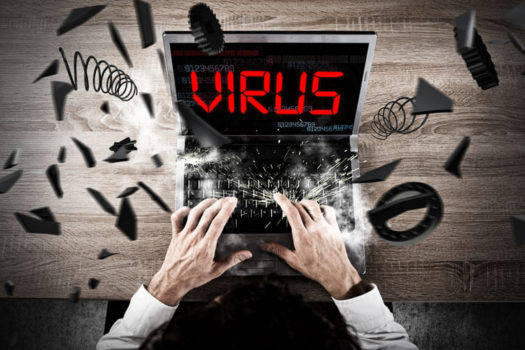
Resident viruses are a type of computer virus that embeds themselves into a computer’s memory, allowing them to remain active even after the original host program is closed. These viruses can intercept and manipulate system operations, leading to ongoing damage and making them difficult to detect and remove. Recognizing the persistent threat of resident computer viruses underscores the need for robust antivirus solutions and regular system monitoring.
How They Hide and Operate
Resident viruses are a type of computer virus that embeds themselves into a computer’s memory, allowing them to remain active even after the original host program has been closed. This persistence in memory makes resident viruses particularly difficult to detect and remove. Once a resident computer virus is loaded into the system’s memory, it can intercept and manipulate system operations, often without the user’s knowledge, leading to various malicious activities such as data corruption or theft.
One of the key ways resident computer viruses hide and operate is by hooking into the operating system’s functions. By integrating with system processes, these viruses can monitor and control file access, keystrokes, and other critical operations. This level of integration allows the resident virus to execute its malicious payload whenever specific conditions are met, such as when a particular program is opened or a certain type of file is accessed. This stealthy operation helps the virus evade detection by conventional antivirus software.
Resident computer viruses can also employ sophisticated techniques to avoid detection and removal. For example, they might disable antivirus programs or use rootkit technology to hide their presence from security scans. Additionally, resident viruses can replicate themselves across various parts of the system, ensuring that even if one instance is removed, others remain to continue their malicious activities. Understanding how resident viruses hide and operate is crucial for implementing effective security measures and maintaining a secure computing environment.
Examples of Resident Viruses
Resident viruses are a persistent threat in the world of computer security, with several notable examples causing significant damage. One such example is the “Randex” virus, which embeds itself into a computer’s memory and can spread across networks. Once active, this computer virus allows remote attackers to control the infected system, leading to data breaches and unauthorized access to sensitive information. Randex’s ability to reside in memory makes it difficult to detect and remove, posing a continuous threat to compromised systems.
Another infamous resident computer virus is “CMJ,” which infects executable files and loads itself into the memory upon execution. This virus modifies critical system files, making it challenging for antivirus software to detect its presence. CMJ can replicate quickly, infecting multiple files and spreading to other systems through shared drives and removable media. The persistent nature of CMJ highlights the dangers posed by resident viruses and the need for robust antivirus solutions.
The “Meve” virus is another example of a resident computer virus that operates stealthily in the background. Meve attaches itself to system memory and intercepts system calls, allowing it to monitor and manipulate system operations. This virus can spread through infected executable files and remains active even after the host program is closed. The Meve virus demonstrates the complexity and resilience of resident viruses, emphasizing the importance of maintaining updated security measures to protect against these insidious threats.
Direct Action Viruses
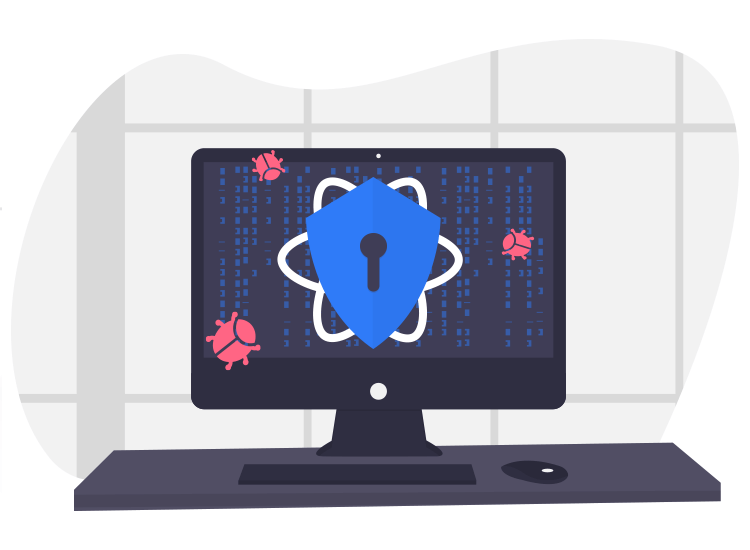
Direct action viruses are a type of computer virus known for their immediate and targeted attack methods. Unlike resident viruses that embed themselves in a computer’s memory, direct action viruses activate only when the infected file or program is executed. Once triggered, these viruses quickly replicate and spread to other files, focusing on infecting as many executables as possible in a short time. This swift and aggressive approach makes direct action computer viruses particularly effective at causing immediate disruption.
How They Attack
The attack mechanism of direct action viruses involves scanning the system for specific file types, typically executable files (.exe), and then injecting their malicious code into these files. By targeting executable files, direct action viruses ensure that they can spread further whenever an infected file is run. This mode of operation allows the virus to rapidly propagate across the system, often before the user realizes their computer has been compromised. The ability to infect and spread quickly is a hallmark of direct action computer viruses.
Despite their aggressive nature, direct action viruses do not remain active in the system’s memory once the initial execution phase is complete. This means that they do not continue to infect new files after the host program is closed. However, the damage caused during their active phase can be extensive, leading to corrupted files, system slowdowns, and potential data loss. To defend against direct action computer viruses, users should employ reliable antivirus software, regularly scan their systems for threats, and practice safe computing habits, such as avoiding the download and execution of untrusted files.
Prevention and Removal
Preventing direct action viruses involves a combination of proactive measures and robust security practices. Regularly updating antivirus software is crucial, as it ensures your system is protected against the latest threats. Antivirus programs can detect and neutralize direct action computer viruses before they have a chance to activate. Additionally, practicing safe browsing habits, such as avoiding suspicious websites and not downloading files from untrusted sources, significantly reduces the risk of infection.
Removing a direct action computer virus requires immediate action once an infection is detected. Start by running a comprehensive scan with updated antivirus software to identify and isolate the infected files. Most antivirus programs can automatically remove or quarantine the virus, preventing further spread and damage. In some cases, you may need to manually delete the infected files if the antivirus software cannot fully eradicate the virus. Ensuring your system is thoroughly cleaned is essential to prevent future reinfections.
Implementing regular backups is another key strategy for both prevention and recovery from direct action computer virus attacks. By maintaining up-to-date backups of your important data, you can quickly restore your system to its pre-infection state if a virus does manage to penetrate your defenses. This not only minimizes downtime but also protects your valuable information from permanent loss. Combining these prevention and removal techniques helps maintain a secure and resilient computing environment against direct action viruses.

